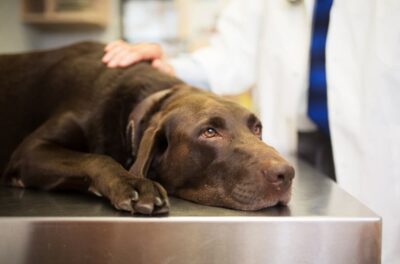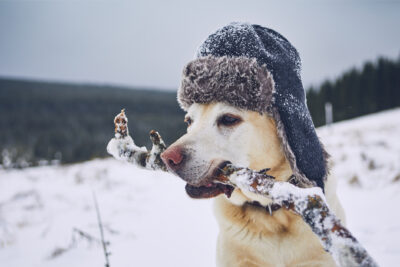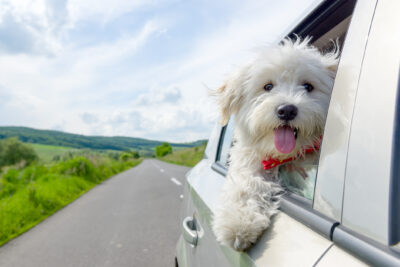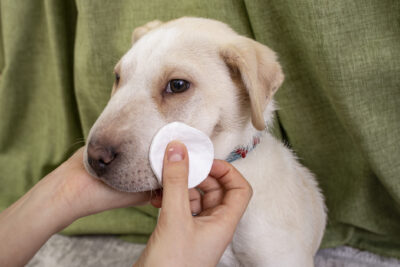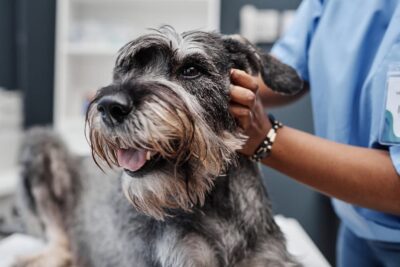When Do Puppies Lose Their Baby Teeth?

Puppies share some similarities with human babies. They both require lots of rest (except at night when you’re sound asleep), have a hefty appetite, pee and poop a lot, and experience the teething process.
Though puppy teething is a natural process, it’s helpful to know what to expect. We’re here to guide you through the entire timeline, offer veterinary-recommended tips for making your new puppy as comfortable as possible, and point out behaviors and symptoms that may require veterinary attention. As always, talk to your veterinarian if you have questions or if something seems abnormal.
Do Dogs Have Baby Teeth?

Dogs have two sets of teeth just like we do, permanent adult teeth and puppy teeth, also known as deciduous teeth. Puppies have 28 teeth while adult dogs have 42 teeth, 20 on the top and 22 on the bottom, says Dr. Jerry Klein, chief veterinary officer for the American Kennel Club. Humans have 20 teeth as babies and 32 as adults.
Puppy teeth start to erupt by 3 weeks of age and fully appear by 6 weeks, says Dr. Katie Pagan, a partner veterinarian with Heart + Paw in Fells Point, Maryland. They begin to lose those baby teeth between 12 and 13 weeks of age, and by 6 months old, they’ll have lost all of their baby teeth.
Though there are differences in the number and appearance of the two sets of teeth, the functions of each set are the same, says Dr. Donnell Hansen, an associate veterinarian with BluePearl Veterinary Partners in Eden Prairie, Minnesota. “Some teeth are designed for grabbing, some for holding, some for shearing, and some for grinding. The whole gamut of teeth is represented in the baby and adult teeth.”
Puppy teeth are much sharper than adult teeth. “If you have ever owned a puppy, you will notice that their teeth are extremely sharp and needle-like,” Pagan says.
When Do Puppies Lose Their Baby Teeth?

Klein says that puppies begin to lose their baby teeth at around 3 months old, usually starting with the incisors.
“At 4 to 5 months of age, most baby teeth should be out, and the molars start to erupt. By 6 months of age, all the baby teeth should be out, and most adult teeth should be in place,” Klein says.
What Do Puppy Teeth Look Like When They Fall Out?

Deciduous teeth are small, fragile, and often difficult to find when they fall out, says Pagan. “Most owners do not even notice [their puppy has] lost a tooth. They may fall out on the floor, or puppies will swallow them, which does not cause an issue.”
Baby teeth usually don’t become discolored as they shed, says Hansen. “While they can sometimes lose their luster when they are about to fall out, a discolored puppy tooth could be infected or dead and should be evaluated by your veterinarian.”
Does the Teething Process Differ by Breed?

Smaller breed dogs like Chihuahuas and Yorkshire Terriers are known for developing retained deciduous teeth, a condition where the puppy teeth are either delayed in shedding or don’t shed at all, says Pagan.
Retained baby teeth can lead to malocclusions, where teeth become misaligned. “There should never be two teeth in one tooth’s spot,” says Hansen.
At about 6 months of age, the entire teething process should be complete, and any missing, misshaped, or abnormally located teeth should be investigated. “Impacted teeth and abnormal bites (malocclusions) can be a big deal and are much easier to navigate and treat if caught early,” Hansen says.
Puppy Teething Timeline and Chart

Though it can vary, the entire teething process, from when puppy teeth begin to erupt to the full development of permanent teeth, usually lasts about four to six months, says Klein. It generally follows this pattern:
Puppy Teething Chart
| Developmental Stage | Teeth Development |
| Birth | Dogs are born toothless. |
| 3 to 5 weeks | Baby incisors (puppy milk teeth) start to erupt. |
| 4 to 5 weeks | Baby canine teeth erupt. |
| 5 to 6 weeks | Baby premolars usually erupt (puppies do not have molars). |
| 12 to 13 weeks | Baby teeth start to fall out to make room for adult teeth. |
| 2 to 5 months | Adult incisors begin to erupt. |
| 4 to 6 months | Adult premolars erupt. |
| 5 to 7 months | Adult canine teeth erupt. |
| 5 to 7 months | Adult molars erupt. |
Behavior to Expect from a Teething Dog

During puppy teething, you’ll likely notice increased biting and chewing activity. “It is normal for them to want to gnaw on the corner of your couch, so preventing access to inappropriate chew toys and redirecting them to appropriate choices is important,” says Hansen.
Some puppies may be in pain, feel a little depressed, and though rare, may even experience a slight fever at the peak of eruption, says Hansen. “Most puppies do not give us any symptoms but every now and then, one can feel pretty yucky when teething.”
Puppy Teething Symptoms

Though puppy teething is usually a seamless process, some dogs might exhibit the following symptoms:
- Increased chewing
- Pain and discomfort
- Red or swollen gums
- Lethargy
Increased Chewing
When puppy teeth begin to fall out, you’ll likely notice that your dog is increasingly chewing and biting, says Pagan. “On some occasions, a pet parent could notice a drop of blood in a food dish or on a toy, but overall they do well with teething.”
Pain and Discomfort
Just as in babies, teething can be difficult for puppies, says Hansen. “As we know with our sore muscles, pressure alleviates pain. So just like babies who want to gnaw on their mom’s necklaces, this is also true for puppies. Puppies are not only investigating everything with their mouth, they are also awfully sensitive when teeth are erupting.”
Red or Swollen Gums
Dogs can develop mound-like swelling on their gums as their adult dog teeth come in, says Hansen.
Lethargy
A happy, healthy puppy usually doesn’t require intervention, says Klein. “However, if any puppy is reluctant to play or eat, consult your veterinarian as soon as possible. While it may be due to teething, it is best to ensure that there is nothing else medically wrong with the puppy.”
How to Help a Teething Puppy

Though puppy teething is a natural process, there are some things you can do to ease your dog’s discomfort.
Provide chew toys. Teething puppies love to chew, which has the added benefit of aiding in the process, says Klein. “It is always recommended to have enough appropriate chew toys during this important (and sometimes destructive) stage.”
Avoid toys that are too hard. Some chew toys considered appropriate may be too hard for puppies during the teething process, says Hansen. “Things like bones and hard chews are notorious for breaking teeth and are best avoided. Rather, choose something that has a little bit of give. Your thumbnail should be able to dent it.”
Try offering frozen treats. Frozen treat toys work very well for teething, says Pagan. “My favorite is a frozen peanut butter-filled Kong.”
Pay attention. Never leave a puppy unattended with any chewable object for extended periods of time, says Klein. “They could ingest pieces of foreign material that could lodge in the throat, stomach or intestines. This is especially true of socks and rags.”
Keep it positive. Everything in puppyhood should be about positivity, says Hansen. “Giving them lots of access to appropriate toys, preventing them from getting into mischief (It’s better to put up a little barrier system to prevent chewing on the dining room table than scolding them for behavior that is normal for them, for example), and redirecting them with play or a walk is best.”
Start good habits early. Get new puppies accustomed to having their mouth and lips handled and touched, says Klein. “Start by lightly rubbing your finger on the gums and then gently lifting their lips. By doing this at an early age, it will be easier to get them used to proper dental care by you and your veterinarian.”
If you notice any unusual symptoms or are unsure if a behavior or symptom is normal, it’s always a good idea to talk to your veterinarian.
